
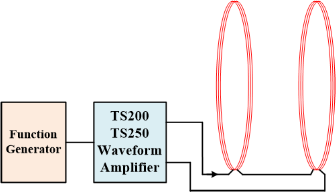
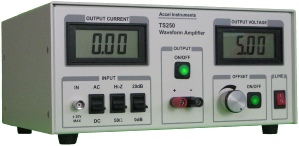









Instruments For Testing Your Innovations


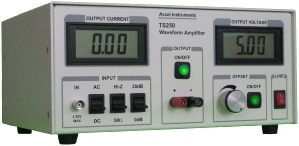
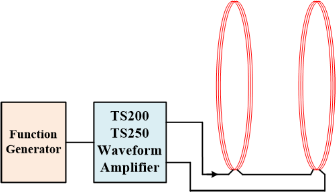
AC Helmholtz Coil Magnetic Field
Helmholtz Coil Design Calculations
Use the below equation to calculate the Helmholtz field.
Eq. 1
B = field in Tesla
n = number of turns in a coil
I = current in amperes
R = coil radius in meters
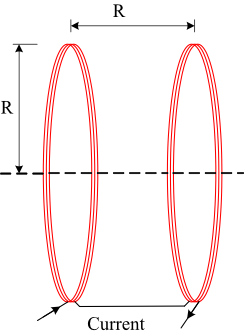

Very high frequency AC Helmholtz coils are frequently used to create even but time varying high-
Introduction
Helmholtz coils, titled after the German physicist Hermann von Helmholtz, comprise of two identical magnetic coils placed in parallel with their centers aligned in the same axis just like a mirror image as exhibited in Figure One. A highly even magnetic field in a 3-
Very high frequency Helmholtz Coils Basic
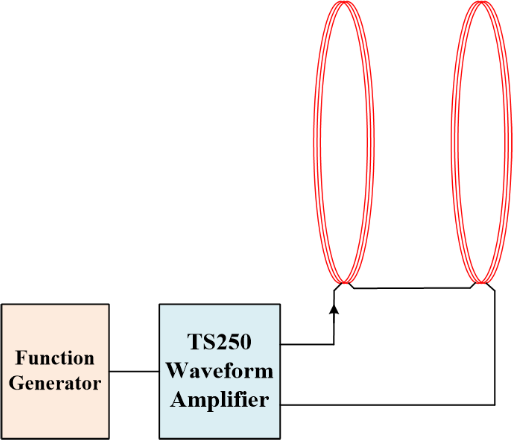
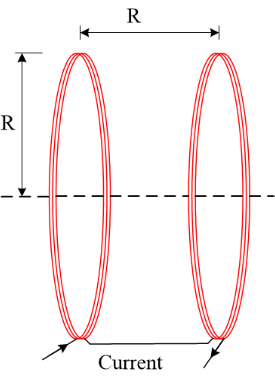
Figure 1. Single-
Very high frequency Helmholtz coils are constructed by two coils. The 2 magnetic coils are designed to be identical so even magnetic field is achieved when the coil radius is equal to the separation distance. The 2 coils are connected in series such that identical current that is fed to both results in the creation of two identical magnetic fields. The 2 added fields accomplished uniform magnetic field in a cylindrical three dimensional space which was in the center of the two parallel coils. This cylindrical-
Design and Construction of Helmholtz Coils
Each Helmholtz coil is made from loops of electrical (copper) wires. When current is passing throughit, magnetic field is generated. The current is relative to the magnetic field density. The Helmholtz coils magnetic field equation is shown below.
Magnetic Field Calculation of Helmholtz Coils
From Equation 1, small radius coil creates higher magnetic field strength. Also the more number of turns in each coil, the greater the magnetic field.
Helmholtz magnetic field is created either using Alternating current or DC current. A good number of Helmholtz coils applications are static (constant) magnetic fields and these fields utilize DC current. Certain applications require non-
High frequency Helmholtz Coils Model
Figure 2. Circuit model of 2 Helmholtz coils connected in series.

A set of high frequency coils can be modeled as shown in Figure 2. Each coil can be modeled like a parasitic resistor and an ideal inductor in series. The parasitic resistor resistance is frequently small. For most very high frequency Helmholtz coils applications where the testing frequency is far below the self-
If the Helmholtz coil testing frequency is close enough to its self-
Figure 3. Very high frequency Helmholtz coils are represented by 2 series connected LCR circuits.

The parasitic capacitance and inductance produced a self-
Very high frequency Helmholtz coils may be series connected as shown in Figure 2 or in parallel as shown in Figure 4. Series connection allows the same current flow through the 2 magnetic coils. Generally, series connection allows for the greatest current and therefore the highest possible magnetic field. However, because 2 coils are in series, the total reactance is also doubled. Higher reactance could require higher driver amplifier voltage. The reactance can be reduced through the use of the resonant techniques explained below.
High frequency Helmholtz Coils Connections
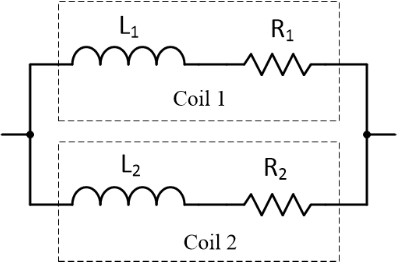
Figure 4. Helmholtz coils parallel connected.
Connecting Helmholtz coils in parallel has the benefit of a reduced reactance. In fact, the reactance is reduced by one-
There are 3 ways that very high frequency AC magnetic field can be generated. The very first method that will be discussed is the direct drive method. This is the method that is the most simple manner for magnetic field to be produced for testing. Altering the magnetic field and frequency under test is incredibly easy. The second method is series-
Driving High-frequency Helmholtz Coils
If the coils are low inductance or the study is not high-
Direct Drive Technique
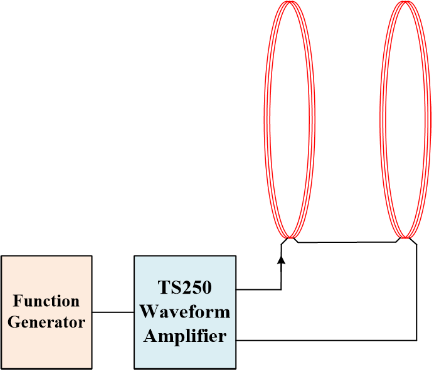
Figure 5. TS250 Waveform Amplifier drives a set of Helmholtz coils.

Figure 6. Equivalent circuit of a Waveform Amplifier directly driving a set of series connected Helmholtz coils.